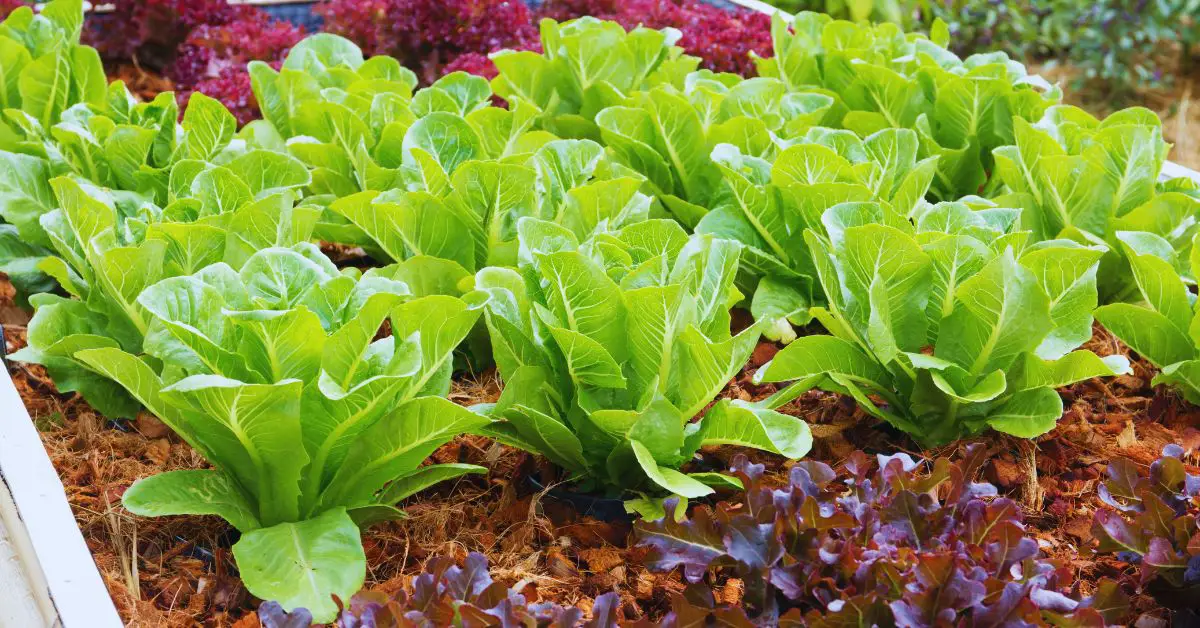You’re about to reveal the secrets to growing a bountiful zucchini harvest from seed. With a few simple strategies, you’ll be enjoying fresh, nutritious, and delicious homegrown zucchini in no time.
From selecting the ideal variety to mastering the art of soil preparation, you’ll soon discover that growing zucchini is easier than you thought.
But that’s not all – by following these easy tips, you’ll also learn how to overcome common obstacles and make the most of your harvest.
So, let’s get started and uncover the essential steps to growing zucchini like a pro!
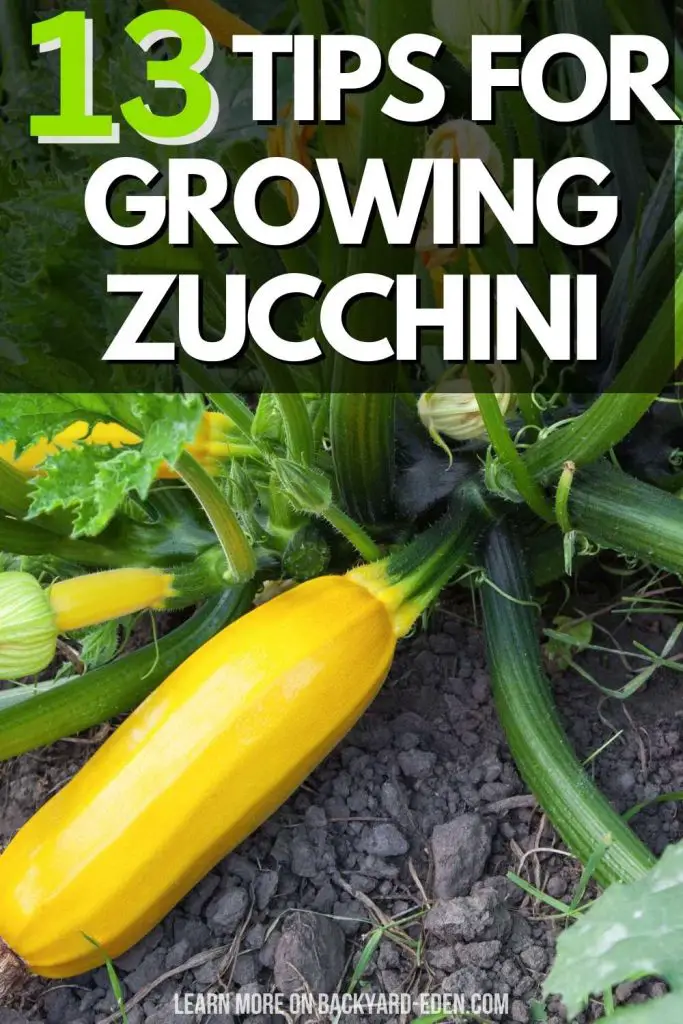
Key Takeaways
- Choose a zucchini variety that suits your needs, considering days to maturity, disease resistance, and fruit characteristics.
- Prepare the soil by testing pH, adding compost, and ensuring loose, crumbly soil for good aeration and nutrient supply.
- Sow seeds 1 inch deep and 2-3 inches apart, firming the soil for successful germination and watering gently to settle around seeds.
- Provide at least 6 hours of direct sunlight and space rows 3-4 feet apart for sunlight penetration and air circulation.
- Water consistently, checking soil daily for moisture and aiming for 1-2 inches of water per week to encourage deep root growth.
1. Choose the Right Zucchini Variety
When selecting a zucchini variety, you’ll want to take into account factors like days to maturity, disease resistance, and fruit characteristics to make sure you’re growing the perfect zucchini for your needs.
Did you know that zucchini has a rich history dating back to the 18th century? Today, breeders have developed a wide range of varieties, each with unique flavor profiles and textures.
When browsing seed catalogs, you’ll notice hybrid and heirloom options. Hybrid varieties offer benefits like increased disease resistance and higher yields, while heirloom varieties boast unique characteristics and flavors.
To get the most out of your seeds, proper storage is essential. Store them in a cool, dry place to maintain their viability.
By comparing different varieties and considering factors like days to maturity, you can choose the perfect zucchini for your climate and cooking style. Breeder interviews can also provide valuable insights into the strengths and weaknesses of each variety.
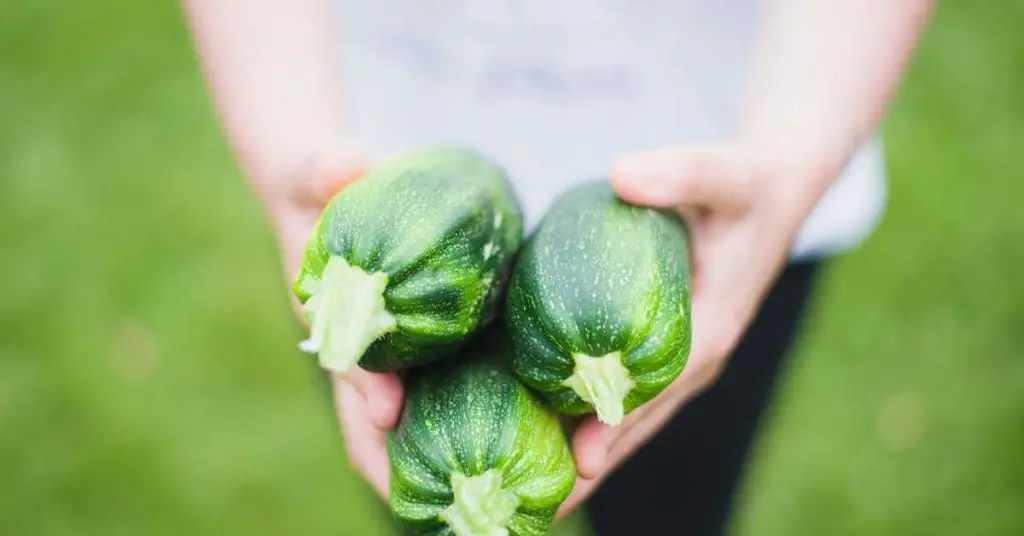
2. Prepare the Soil for Planting
Before sowing your carefully selected zucchini seeds, you need to prepare a well-draining, nutrient-rich soil bed that will provide your plants with a strong foundation for growth.
To achieve this, start by testing your soil pH, aiming for a slightly acidic to neutral range of 6.0-7.0. If your soil is too acidic or alkaline, adjust it by adding lime or sulfur accordingly.
Next, focus on achieving a balanced nutrient profile. Zucchini requires a mix of nitrogen, phosphorus, and potassium. You can add organic matter like compost or well-rotted manure to enhance soil fertility.
Make sure the soil is loose and crumbly, allowing for good water penetration and aeration. If your soil is heavy clay or sandy, mix in some organic matter to improve its structure.
A well-prepared soil bed will provide your zucchini plants with the necessary nutrients for healthy growth and fruit production. By taking the time to prepare your soil correctly, you’ll be rewarded with a bountiful harvest.
3. Sow Seeds at the Right Depth
Planting your zucchini seeds at the right depth is essential for successful germination and establishment. You want to give your seeds the best possible start in life, and getting the depth right is pivotal. A general rule of thumb is to sow your seeds about 1 inch deep and 2-3 inches apart. However, if you’ve treated your seeds with a seed coating or priming, you can sow them a bit deeper, about 1.5 inches. This is because these treatments help to speed up germination and give your seeds an extra boost.
When sowing, make sure the soil is firm and even. You can gently press down on the soil to remove any air pockets. Then, place your seeds at the correct depth and cover them with a thin layer of soil. Water the soil gently but thoroughly to settle the soil around the seeds. Avoid overwatering, as this can wash away the tiny seeds.
Provide Adequate Sunlight and Space
As you get ready to grow zucchini from seed, you’ll need to make sure your plants receive the right amount of sunlight and have enough space to thrive.
You’ll want to identify a spot that gets at least six hours of direct sunlight a day, as zucchini requires full sun to produce a bountiful harvest.
4. Zucchini’s Sun Requirements
When growing zucchini, you’ll want to make sure your plants receive at least six hours of direct sunlight per day, ideally in a spot that gets morning sun and dappled afternoon shade. This balance of sunlight and shade will help regulate your zucchini’s growth and promote healthy development.
During the summer hours, the intense afternoon sun can be strong, so providing some shade will prevent scorching. Morning sun, on the other hand, is crucial for stimulating growth and promoting fruiting.
To guarantee your zucchini plants receive the right amount of sunlight, consider the orientation of your garden bed. If your garden faces east or southeast, you’ll get the perfect amount of morning sun. If your garden faces west or southwest, you may need to provide some shade during the hottest part of the day.
5. Space Between Rows
Your zucchini plants will thrive with adequate space between rows, which guarantees air circulation, easy access, and, most importantly, sufficient sunlight penetration.
When planning your zucchini garden, consider the row width, aiming for a minimum of 3-4 feet between each row. This will secure that each plant receives the sunlight it needs to grow healthy and strong.
Intercropping strategies can also be employed to maximize space and reduce competition for resources. For example, you can plant complementary vegetables like lettuce, spinach, or radishes between zucchini rows, making the most of your garden space.
Additionally, maintaining adequate space between rows will make it easier for you to tend to your plants, allowing for effortless harvesting and pruning.
6. Ideal Garden Location
Set your zucchini plants up for success by situating them in a spot that receives direct sunlight for at least six hours a day, guaranteeing they get the energy they need to produce a robust harvest. When choosing the ideal garden location, consider the garden orientation to maximize sunlight exposure. A south-facing garden bed is ideal, as it receives the most direct sunlight throughout the day.
In addition to sunlight, make sure your zucchini plants have adequate space to grow. Provide at least 3-5 feet between each plant, depending on the variety, to allow for proper air circulation and growth.
Before planting, conduct a soil test to determine the pH level and nutrient content of your soil. This will help you identify any necessary amendments to create a fertile growing environment.
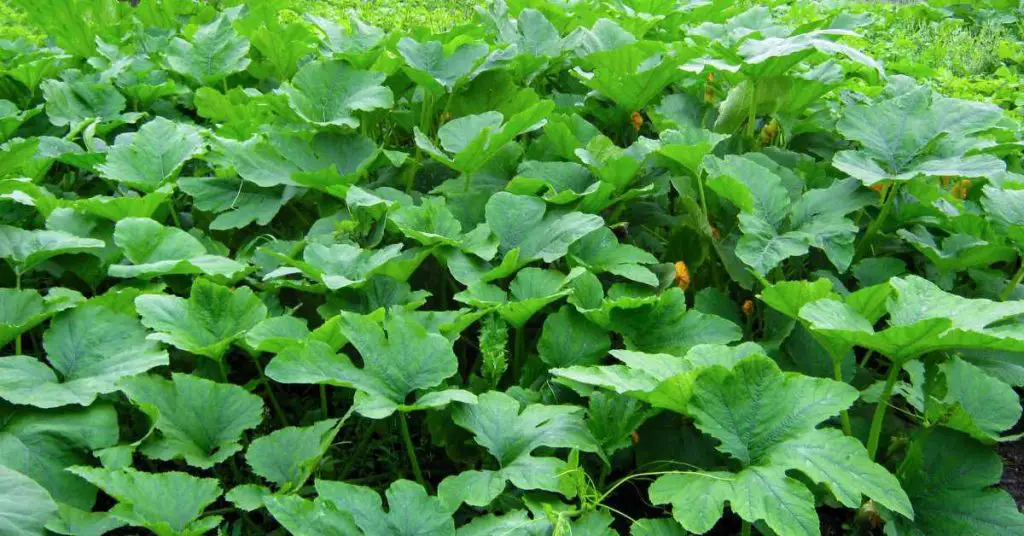
7. Water Consistently and Wisely
Consistent moisture, especially during fruit formation, is crucial, so you’ll want to check the soil daily to make sure it’s consistently moist but not waterlogged. You’ll want to achieve the perfect balance to promote healthy growth and prevent water-related issues. The key is to make sure the soil absorbs water efficiently, allowing for ideal water absorption. Aim for about 1-2 inches of water per week, either from rainfall or irrigation.
When you water, make sure the soil is saturated to a depth of 6-8 inches. You can check this by inserting your finger into the soil or using a moisture meter. Avoid overwatering, which can lead to waterlogged soil, reducing oxygen availability and increasing the risk of root rot. Instead, water deeply and infrequently to encourage deep root growth.
8. Control Pests and Common Diseases
As you nurture your zucchini plants, you’ll need to keep a watchful eye out for unwanted visitors and potential health issues.
You’ll want to develop a plan to manage pests that can wreak havoc on your crop, such as aphids, squash bugs, and cucumber beetles.
Zucchini Pest Management
When growing zucchini, you’ll inevitably encounter pests and diseases that can quickly destroy your crop, so it’s important to stay vigilant and take proactive measures to prevent infestations and infections.
One of the most effective ways to manage pests is through crop rotation. By rotating your zucchini crop with other non-squash varieties, you can break the life cycle of pests and reduce the risk of infestation.
Another natural and organic method is to use neem oil, which can be sprayed on your plants to repel pests like aphids, whiteflies, and spider mites. Make sure to spray neem oil in the early morning or evening when the sun isn’t intense, as it can cause burning on the leaves.
Regularly inspect your plants for signs of pests, such as holes, yellowing leaves, or actual pests on the leaves or stems. Catching infestations early can make all the difference in saving your crop.
Common Disease Prevention
You can greatly reduce the risk of disease in your zucchini crop by maintaining good garden hygiene, removing weeds and debris, and providing adequate air circulation around your plants. This will help prevent moisture from accumulating and creating an ideal environment for fungal infections to develop. Fungal infections, such as powdery mildew, can spread quickly and devastate your crop.
Regularly inspect your plants for signs of infection, and remove any infected leaves or stems to prevent the disease from spreading.
It’s also essential to practice crop rotation and avoid overwatering, as excess moisture can lead to bacterial resistance. Bacterial resistance can make it difficult to treat diseases, making prevention extremely important. Water your zucchini plants at the base, avoiding the leaves to prevent moisture from accumulating on the foliage.
9. Fertilize for Healthy Growth
One essential step in promoting healthy zucchini growth is to fertilize your plants regularly, providing them with the necessary nutrients for best development.
As you nurture your zucchini plants, it’s important to maintain ideal soil conditions. Check your soil pH regularly, aiming for a slightly acidic to neutral range of 6.0-7.0. This allows your zucchini plants to absorb essential nutrients effectively.
To create a nutrient-rich environment, incorporate organic amendments like compost, manure, or well-rotted leaf mold into your soil. These natural additives enhance soil structure, promote beneficial microbial activity, and provide slow-release nutrients.
When choosing fertilizers, opt for balanced, water-soluble formulas (e.g., 10-10-10 NPK) or organic alternatives like fish emulsion or bone meal. Apply fertilizers according to the product’s instructions, taking care not to over-fertilize, which can damage your plants.
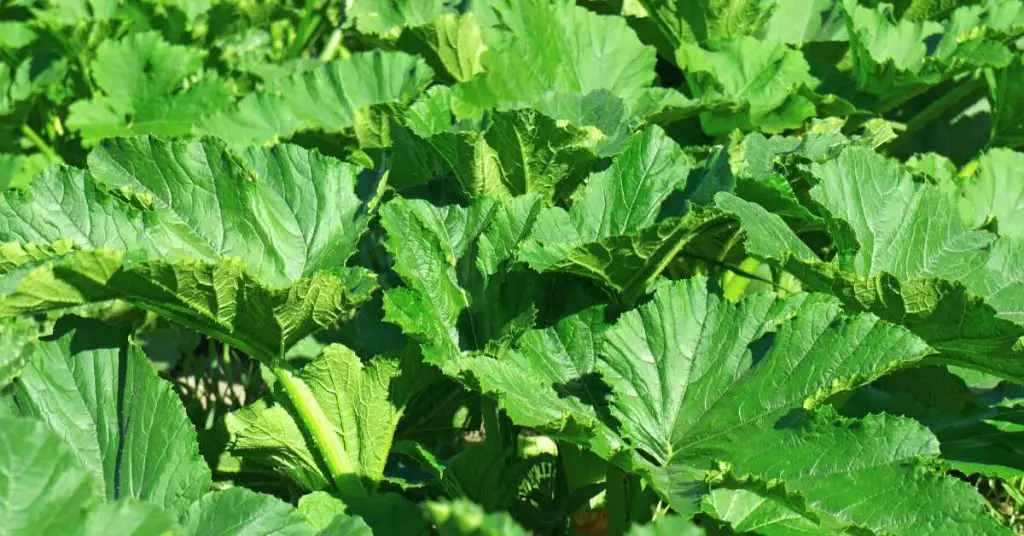
10. Support Zucchini Plants as Needed
Regularly inspect your zucchini plants for signs of weakness or strain, as they can quickly outgrow their supports and require additional structural help to continue growing upright and producing fruit efficiently. You’ll know it’s time for support when the stems start to lean or the leaves become too heavy with water.
When this happens, gently tie the stems to a trellis or cage using soft twine or clips. This will help maintain the plant’s upright posture and promote better air circulation, reducing the risk of disease.
As your zucchini plants grow, you may need to prune them to encourage bushy growth and more fruit production. This is where zucchini pruning comes in. Remove any weak or spindly growth, and trim back the tips of the stems to encourage branching. This will help your plants focus their energy on producing more fruit.
Stem training is also essential, as it helps direct the plant’s energy towards fruit production. By providing the right support and pruning your zucchini plants regularly, you’ll be rewarded with a bountiful harvest of delicious, healthy zucchinis.
11. Mulch Around the Plants
As the zucchini plants grow, a thick layer of organic mulch around their base will help retain moisture, suppress weeds, and regulate soil temperature, creating a more favorable environment for healthy growth and fruit production.
You’ll want to apply a 2-3 inch layer of mulch around the plants, keeping it a few inches away from the stem to prevent rot. This will help maintain a consistent soil temperature, which is essential for zucchini plants.
Mulch also acts as a weed barrier, preventing weeds from competing with your zucchini plants for water and nutrients. Organic mulch options like straw, bark chips, or grass clippings work well for this purpose.
As an added benefit, mulch will break down over time, adding organic matter to the soil and further enriching it. By mulching around your zucchini plants, you’ll create a more hospitable environment for them to thrive in.
12. Learn to Identify Common Issues
You’ll need to keep a close eye on your zucchini plants to catch any potential issues before they cause significant damage. As you nurture your seedlings, be on the lookout for signs of trouble.
One common issue is seed rot, which can occur when the soil is too moist or the seeds are planted too deeply. Soil fatigue, caused by repeated planting in the same spot, can also lead to poor growth.
Garden stress, brought on by extreme temperatures or inconsistent watering, can cause your plants to become vulnerable to disease. Weather woes like heavy rainfall or intense sunlight can also take a toll.
If your zucchini plants are looking stunted, check for signs of being root bound, which can happen when the roots outgrow their container. Nutrient lockout, where essential nutrients are blocked, and transplant shock, which occurs when the plant is stressed during relocation, are other potential issues to watch out for.
13. Harvest Zucchini at the Right Time
Timing is essential when harvesting zucchini, so check your plants frequently to catch them at their peak flavor and texture, usually when they’re between 6-10 inches long and about 1-2 inches in diameter. You’ll know they’re ripe when the skin is tender and the color is deep green. Avoid letting them grow too large, as this can make them taste bitter.
To make sure you’re harvesting at the right time, check your plants every 2-3 days during peak season. Zucchini ripeness can happen quickly, so regular checks are important. You might need to harvest every day or every other day, depending on the variety and growing conditions. Harvest frequency is key to encouraging your plants to produce more zucchinis.
When you harvest, use scissors or a sharp knife to cut the fruit from the stem, leaving about 1 inch of stem attached to the plant. This will help prevent damaging the plant and promote healthy growth.
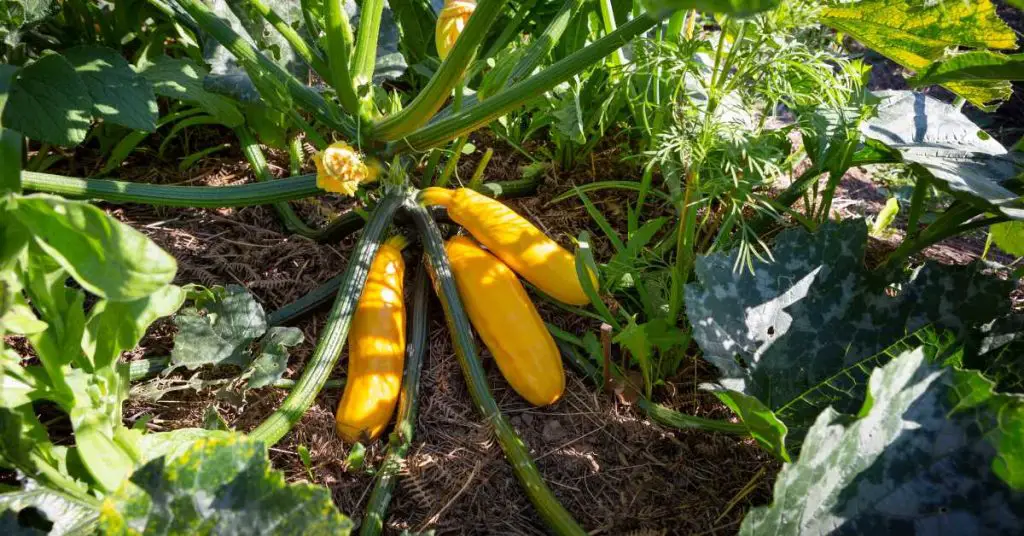
Store Zucchini Properly for Later
Now that you’ve harvested your zucchini at the right time, it’s important to store it properly to enjoy it for months to come.
You’ll want to preserve its flavor and texture by freezing, storing in a cool place, and keeping it dry to prevent moisture from ruining your bounty.
Freeze It Solid
Freeze zucchini at 0°F (-18°C) or below to preserve its texture and nutritional value, ensuring a delicious and healthy addition to your winter meals. Flash freezing is a great way to lock in the nutrients and flavor of your freshly harvested zucchini.
To do this, simply chop or grate the zucchini, then spread it out on a baking sheet and place it in the freezer. Once frozen, transfer the zucchini to airtight containers or freezer bags, making sure to remove as much air as possible before sealing.
Another convenient way to store zucchini is by making frozen cubes. Simply grate or chop the zucchini, then portion it out into ice cube trays. Add a little water to each cube, then freeze until solid. These frozen cubes are perfect for adding to soups, stews, or casseroles throughout the winter months.
Store In Cool
To keep your zucchini fresh for a longer period, store it in a cool, dry place with good air circulation, away from direct sunlight and heat sources. This will help maintain its texture and flavor.
A cooler temperature, around 40°F to 50°F (4°C to 10°C), is vital for storing zucchini. You can refrigerate it to keep it fresh for a longer period. Make sure to store it in a cool, dark place, like the crisper drawer of your refrigerator.
Fresh storage is essential to keeping your zucchini fresh for a longer time. If you don’t plan to use it immediately, store it in a plastic bag or wrap it tightly in plastic wrap to maintain humidity and prevent moisture loss.
Enjoy Your Homegrown Harvest
As you patiently anticipate the fruits of your labor, you’ll soon be enjoying a bountiful harvest of fresh, nutritious, and delicious homegrown zucchini. This is the most rewarding part of growing your own zucchini from seed – getting to savor the fruits of your hard work!
You can explore various fresh recipes to make the most of your harvest. From grilled zucchini to zucchini bread, the possibilities are endless. Decorate your home with a harvest theme, and host a garden party to share your bounty with friends and family.
Consider extending your harvest season by using row covers or cold frames to keep your zucchini plants producing longer. You can also share your harvest by giving food gifts to loved ones or preparing family meals together.
Don’t forget to fire up the grill for summer BBQs, where your fresh zucchini will be the star of the show!
Frequently Asked Questions
Can I Grow Zucchini in Containers or Indoor Pots?
You can definitely grow zucchini in containers or indoor pots, but make sure to choose a pot that’s at least 5-gallons and use high-quality soil with good drainage to support healthy growth.
How Do I Prevent Zucchini From Taking Over My Garden?
To prevent zucchini from taking over your garden, you’ll need to establish clear garden boundaries and practice smart space management; allocate specific areas for each plant, and consider using trellises or cages to keep them contained.
Can I Grow Zucchini in Partial Shade or Indirect Sunlight?
You can grow zucchini in partial shade, but keep in mind it’s not ideal; zucchini has moderate shade tolerance, requiring at least 4-6 hours of direct sunlight to thrive, so choose a spot with indirect sunlight that still gets some direct light.
Will Zucchini Plants Attract Bees and Other Pollinators?
You’ll be delighted to know that your zucchini plants will attract bees and other pollinators, making your garden a haven for pollinator plants, embracing bee-friendly gardening and fostering a thriving ecosystem.
Can I Save Zucchini Seeds From My Harvest for Next Year?
You can save zucchini seeds from your harvest for next year, but timing is key; harvest seeds when they’re mature and dry, and store them properly to guarantee seed viability for a successful future crop.
Conclusion
You’ve made it! With these easy tips, you’ve successfully grown zucchini from seed.
You’ve chosen the perfect variety, prepared the soil, and provided ideal growing conditions.
You’ve identified and managed common issues, harvested at the right time, and stored your bounty for later.
Now, sit back and enjoy the fruits of your labor – a delicious, homegrown zucchini harvest that’s all yours!


